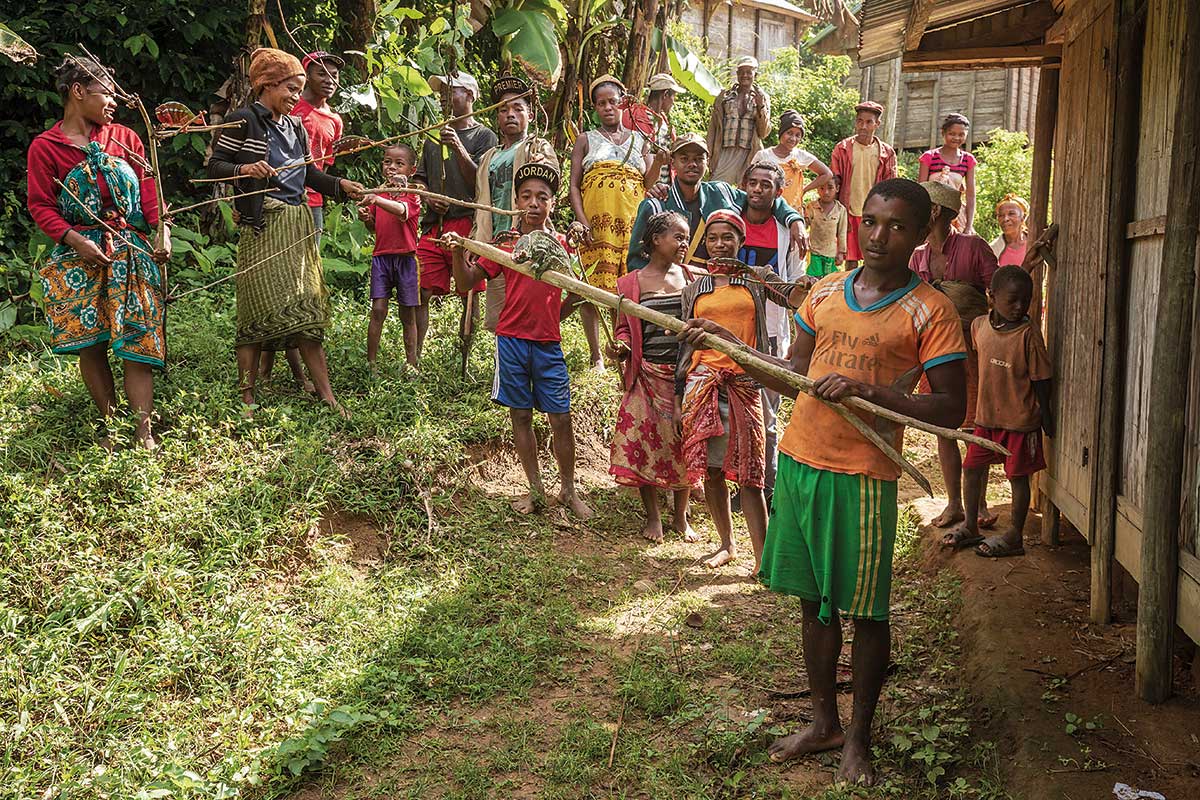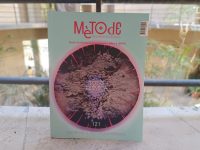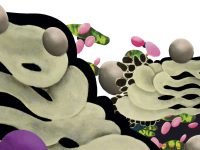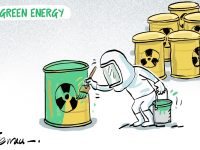
Word spread in that remote Malagasy village: there were foreigners interested in the local wildlife. We were those foreigners. Half an hour later the scene was, in the truest sense, spectacular. My tireless search for reptiles, amphibians, and arthropods in different parts of the world has always aroused great curiosity in the local population: why look for lizards on a Patagonian beach while people drink mate and enjoy the sun? Why photograph fluorescent geckos in Namibia? Why look for amphibians in the lost wastelands of the Nicaraguan hills? But it was different this time. Without asking any questions, women, men, boys, and girls appeared before us with holding sticks with a multitude of panther chameleons (Furcifer pardalis) and Parson’s chameleons (Calumma parsonii). Even for the best of trackers, finding that many chameleons in half an hour is almost impossible. In some areas of Madagascar, local people keep and monitor chameleons isolated in trees and bushes, waiting for strangers eager to have their picture taken with them. They are kept in artificial freedom. As a scientist and photographer, that was not my intention, but the villagers did not care about the nuance.
Tourism-oriented animal abuse, geared towards the search for snapshots of «wild» animals, has increased in recent years. The widespread availability of mobile phones with cameras and the wide range of package tours to remote parts of the world may be some of the causes. Thai elephants, Peruvian sloths, or Moroccan snakes are just some of the documented examples of wildlife being mistreated for the benefit of recreational tourists. However, the victims in this deep-rooted problem are not only the animals, but sometimes also their keepers, who see this as the only way to make a living. While global measures would be necessary to make progress in this difficult reality, our individual actions can make a difference. Avoiding accommodation facilities that offer captive wildlife as an attraction, especially those where the animals are poorly maintained, or not collaborating in actions that involve the mistreatment of wildlife, such as photography or street shows, can be a promising first step. Can you think of any other initiatives?
That morning I was trying to immortalise the beauty of the Malagasy herpetofauna with my camera. Then, the most interesting photograph unexpectedly appeared before me. An image that contained a lot of information. Adapting work plans in photography is just as important as technique and setting the correct parameters. Improvising can be the best ally in our search for different results with our camera.





